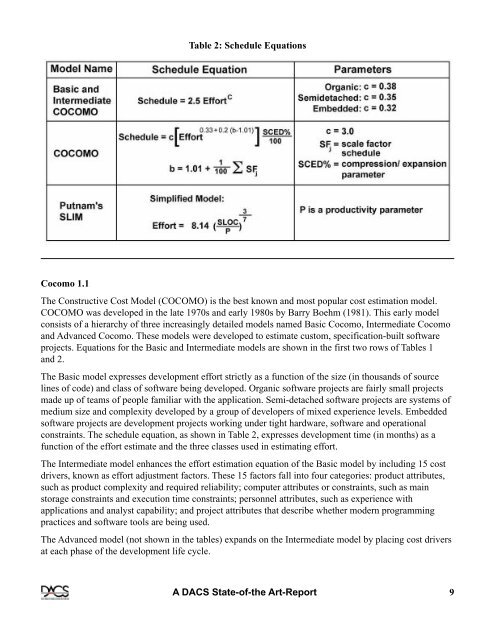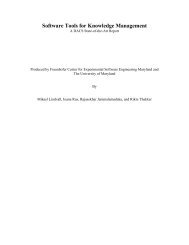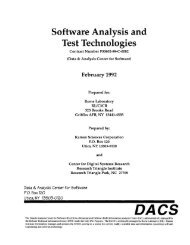Modern Empirical Cost and Schedule Estimation Tools
Modern Empirical Cost and Schedule Estimation Tools
Modern Empirical Cost and Schedule Estimation Tools
Create successful ePaper yourself
Turn your PDF publications into a flip-book with our unique Google optimized e-Paper software.
Cocomo 1.1<br />
Table 2: <strong>Schedule</strong> Equations<br />
The Constructive <strong>Cost</strong> Model (COCOMO) is the best known <strong>and</strong> most popular cost estimation model.<br />
COCOMO was developed in the late 1970s <strong>and</strong> early 1980s by Barry Boehm (1981). This early model<br />
consists of a hierarchy of three increasingly detailed models named Basic Cocomo, Intermediate Cocomo<br />
<strong>and</strong> Advanced Cocomo. These models were developed to estimate custom, specification-built software<br />
projects. Equations for the Basic <strong>and</strong> Intermediate models are shown in the first two rows of Tables 1<br />
<strong>and</strong> 2.<br />
The Basic model expresses development effort strictly as a function of the size (in thous<strong>and</strong>s of source<br />
lines of code) <strong>and</strong> class of software being developed. Organic software projects are fairly small projects<br />
made up of teams of people familiar with the application. Semi-detached software projects are systems of<br />
medium size <strong>and</strong> complexity developed by a group of developers of mixed experience levels. Embedded<br />
software projects are development projects working under tight hardware, software <strong>and</strong> operational<br />
constraints. The schedule equation, as shown in Table 2, expresses development time (in months) as a<br />
function of the effort estimate <strong>and</strong> the three classes used in estimating effort.<br />
The Intermediate model enhances the effort estimation equation of the Basic model by including 15 cost<br />
drivers, known as effort adjustment factors. These 15 factors fall into four categories: product attributes,<br />
such as product complexity <strong>and</strong> required reliability; computer attributes or constraints, such as main<br />
storage constraints <strong>and</strong> execution time constraints; personnel attributes, such as experience with<br />
applications <strong>and</strong> analyst capability; <strong>and</strong> project attributes that describe whether modern programming<br />
practices <strong>and</strong> software tools are being used.<br />
The Advanced model (not shown in the tables) exp<strong>and</strong>s on the Intermediate model by placing cost drivers<br />
at each phase of the development life cycle.<br />
A DACS State-of-the Art-Report 9




